A pulley fixed to the ceiling of an elevator car carries a thread whose ends are attached to the loads of masses 3m and m . The car starts gong up with acceleration g/s. Assuming the masses of the pulley and the thread, as well as friction, to be negligible, find the force exerted by the pulley on the ceiling of car.
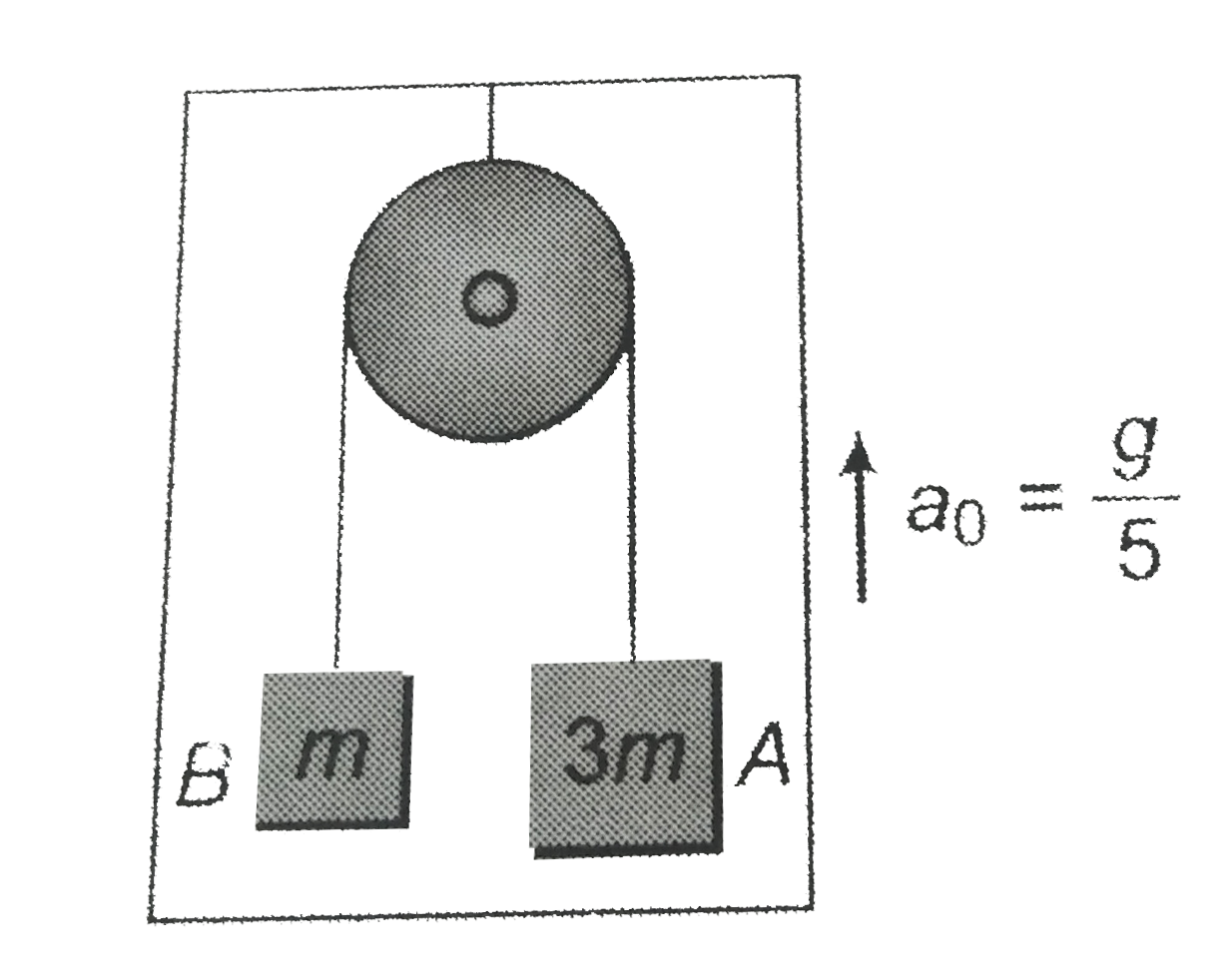
Let the acceleration of block A with respect to pulley be a in the downward direction, obvisously acceleration of block B will be in upward direction.
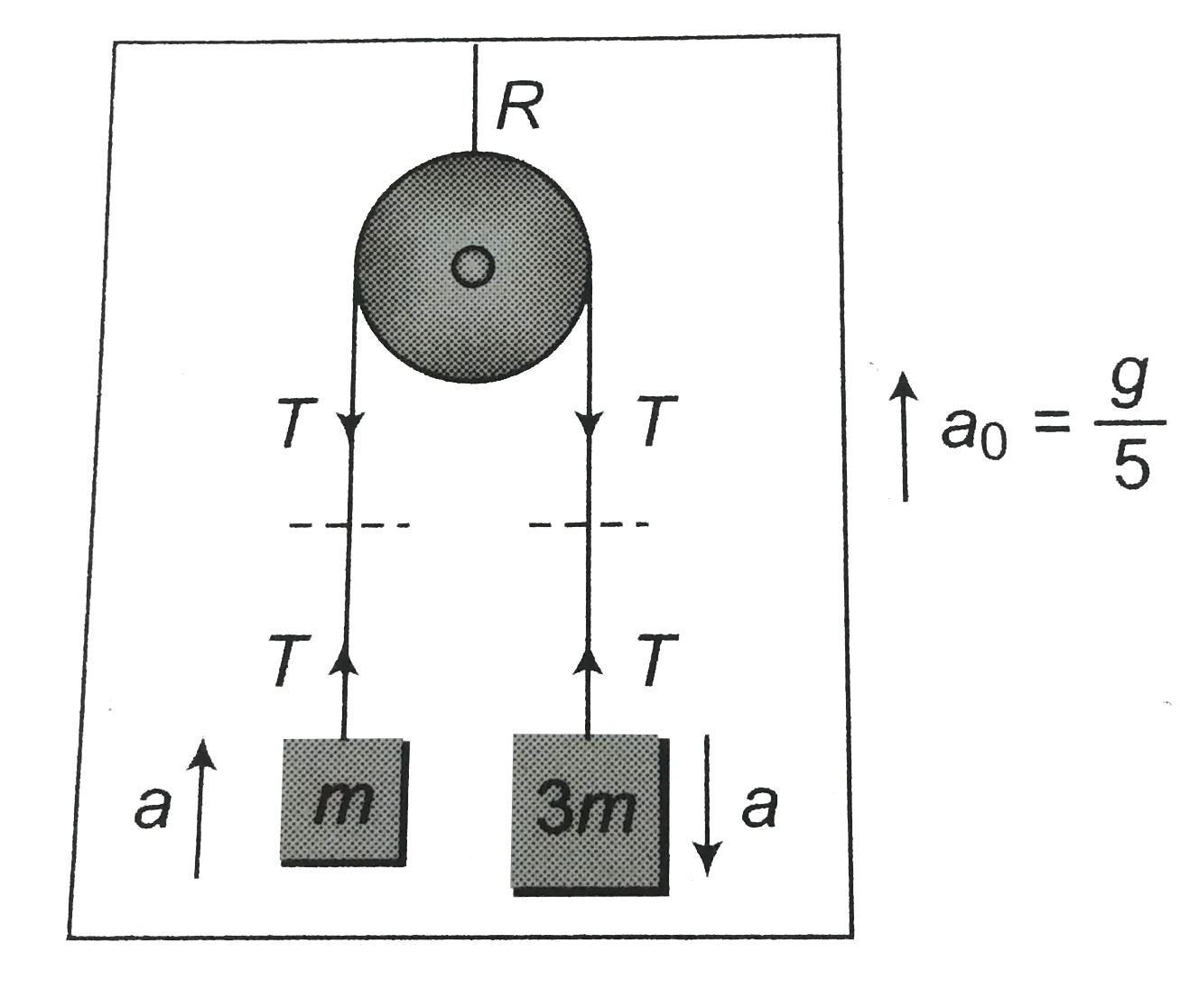
Acceleration of A w.r.t. the ground
aA/g=aA/p−ap/g=(a−a0) In downward direction
aB/g=aB/p+ap/g=(a+a0) in upward direction

3mg−T3m(a−a0) (i)
T'=mg=m(a+a0) (ii)
Solving a=(3g)(5),T=9mg5
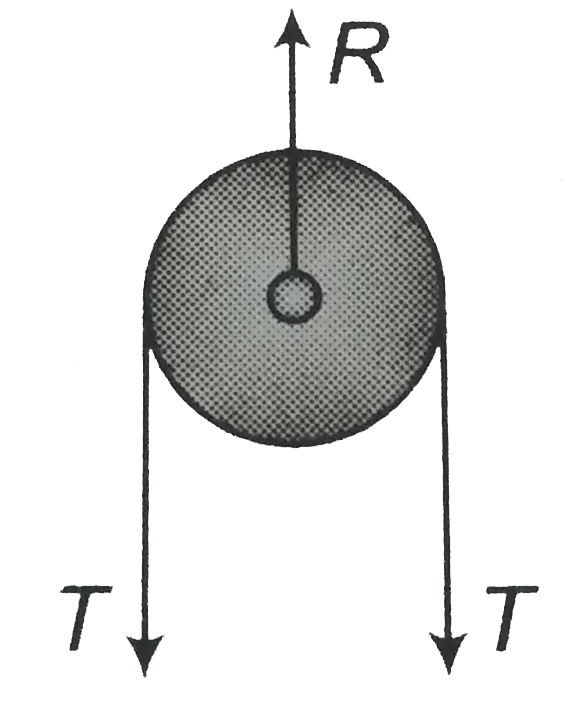
R−2T=0 (pulley is massless)
R=2T=18mg5
Note: 1. First, sketch free body diagram.
2. Decide acceleration of blocks with respect to ground
3. Solve the equation.
If we work from the elevator frame (non−inertial frame), we have to apply pseudo force on each block.

Pulling force =3m(g+a0)−m(g+a0)
=2m(g+a0)
Mass to be pulled =3m+m=4m
a=2m(g+a0)4m=g+a02
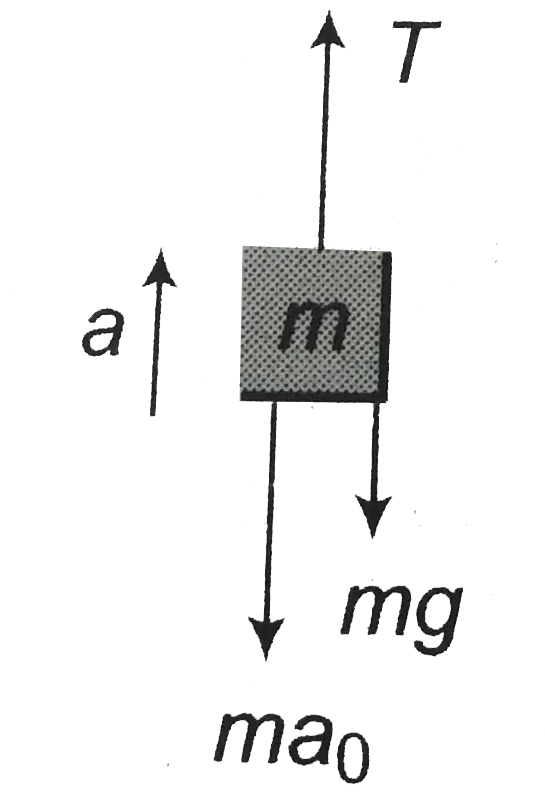
T−m(g+a0)=ma=m2(g+a0)
T=3m2(g+a0)=3m2(g+g2)=9mg5
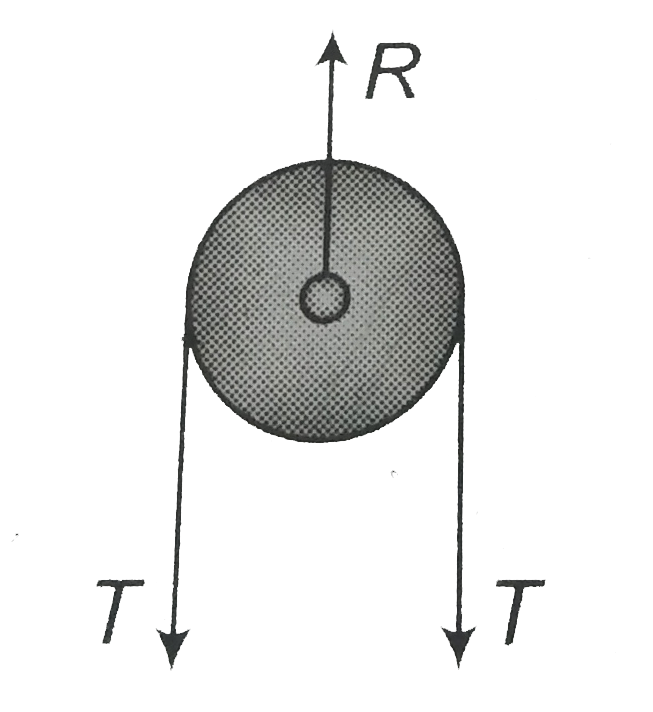
R−2T=0
R=2T=18mg5
Topper's Solved these Questions
Similar Questions
A pulley fixed to the ceiling of an elevator car carries a thread whose ends are attached to the loads of masses m1 and m2. The car starts going up with an acceleration wo. Assuming the masses of the pulley and the thread, as well as the friction, to be negligible find:
(a) the acceleration of the load m1 relative to the elevator shaft and relative to the car,
(b) the force exerted by the pulley on the ceiling of the car.View SolutionA pulley fixed to the ceiling of an elevator car carries a thread whose ends are attached to the masses m1andm2. The car starts going up with an acceleration a0. Assuming the masses of the pulley and the thread as well as the friction to be negligible, find:
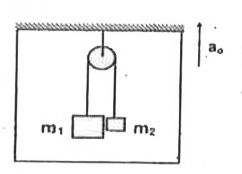
(a) the acceleration of the load m1 relative to the elevator shaft and relative to the car
(b) the force exerted by the pulley on the ceiling of the car. Given m1>m2.View Solution
Knowledge Check
- Question 1 - Select One
In the arrangement shown in the figure, the pulley has a mass 3m, Neglecting friction on the contact surface, the force exerted by the supporting rope AB on the ceiling is
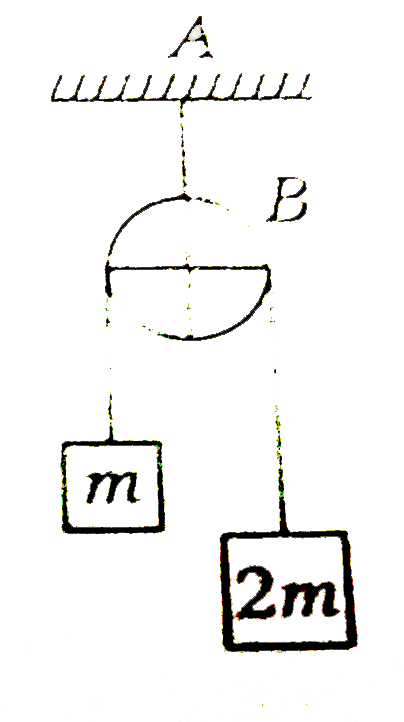 A6 mgB3 mgC4 mgDNone of the above
A6 mgB3 mgC4 mgDNone of the above
Find the acceleration of the block of mass m in the arrangement shown in the following figures. The masses of the pulleys and the threads, as well as the friction are assumed to be negligible.
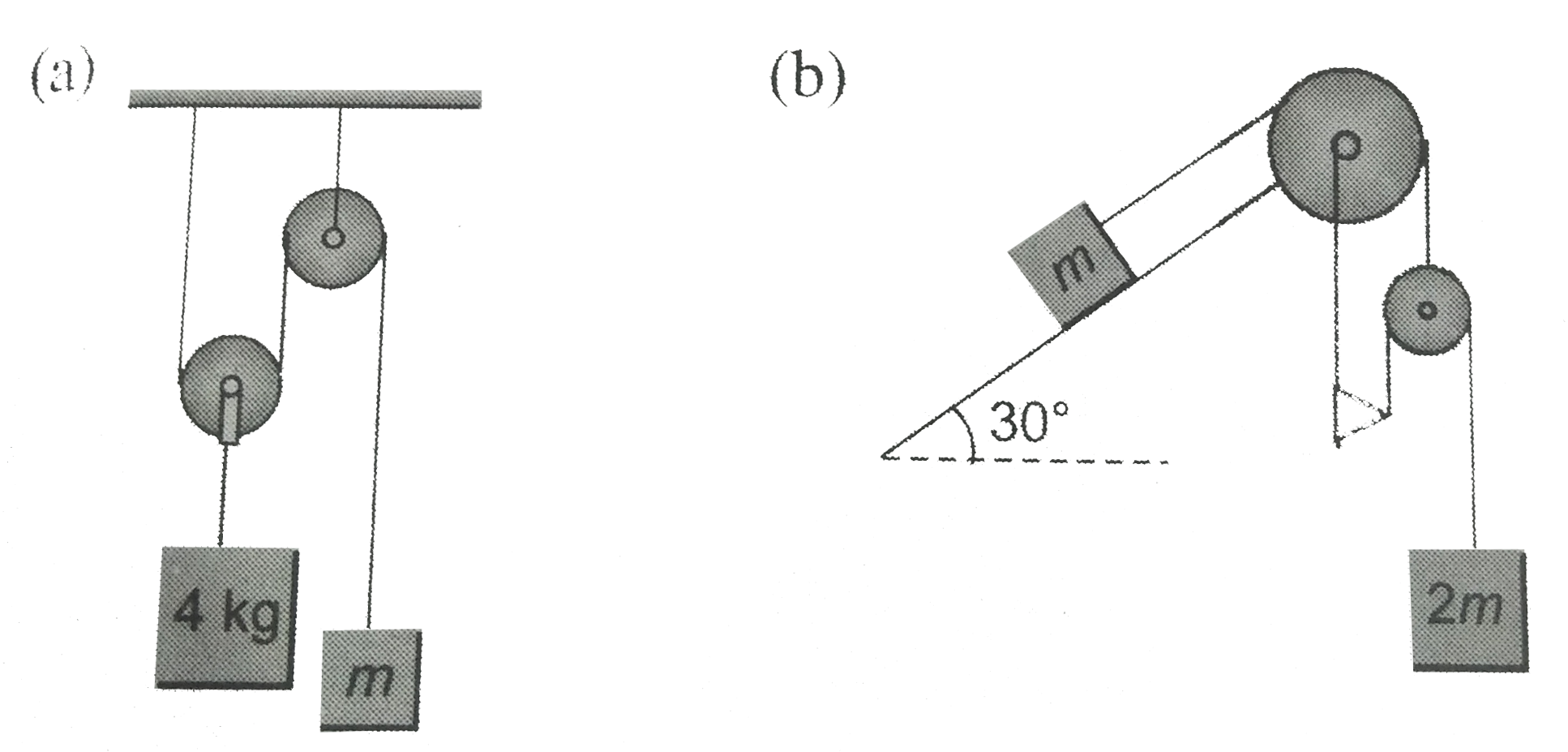 View Solution
View SolutionThin threads are tightly wound on the ends of a uniform solid cylinder of mass m. The free ends of the threads are attached to the ceiling of an elevator car. The car starts going up with an acceleration w0. Find the acceleration w′ . Find the acceleration w′ of the cylinder relative to the car and the force F exerted by the cylinder on the ceiling (through the threads).
View SolutionIn the arrangement shown in the figure, the blocks have masses 3m,m and 2m, the friction is absent, the masses of the pulleys and the threads are negligible. Find the acceleration of mass 3m.
 View Solution
View SolutionA body of mass m is suspended from a spring fixed to the ceiling of an elevator car. The stiffness of the spring is x. At the moment t=0 the car starts going up with an accelerationw. Neglecting the mass of the spring , find the law of motion y(t0 of the body relative to the elevator car if y(0)−0 and y(0)=0. Consider the following two cases :
(a) w=const,
(b) w=αt, where αis a constant.View SolutionA pulley fixed to the ceiling carried a thread with bodies of masses m1 and m2 attached to its ends. The mases of the pulley and the thread are negligible and friction is absent. Find the acceleration of the centre of mass of this system.
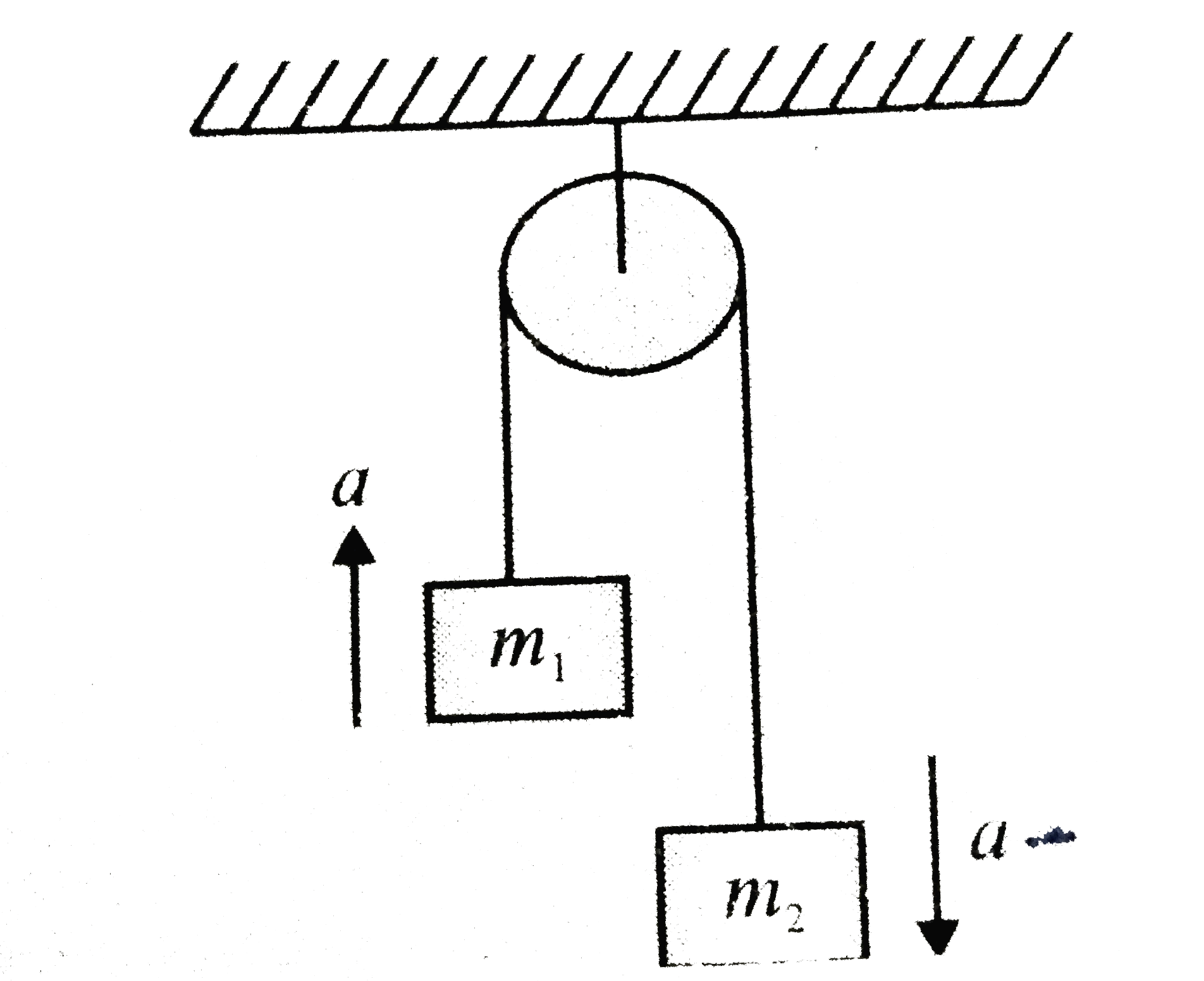 View Solution
View SolutionA pulley fixed to the ceiling carries a thread with bodies of masses m1 and m2 attached to its ends. The masses of the pulley and the thread are negligible, friction is absent. Find the acceleration wC of the centre of inertia of this system.
View SolutionIn the arrangement shown in figure the bodies have masses m0, m1, m2, the friction is absent, the masses of the pulleys and the threads are negligible. Find the acceleration of the body m1. Look into possible cases.
 View Solution
View Solution

